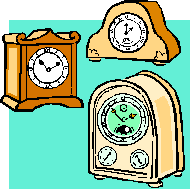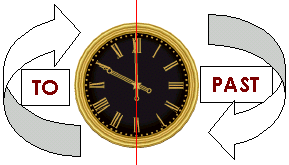 |
La
expresión utilizada en inglés para preguntar la
hora es la siguiente:
What time is it? o también What's the
time? (menos usual) = ¿Qué hora es?
Aunque también existen otras posibilidades:
- Have you got the time?
- Could you tell me the time please?
- Would you mind telling me the time?
- Have you got the time on you?
- You wouldn't know the time, would you?
- Do you know the time? |
Se utiliza 'a.m.'
y 'p.m.' en un lenguaje más formal y normalmente
escrito.
Ej. Banks are open from 9:30 a.m. to 2:30 p.m.
Es más normal decir: 'In the morning', 'In the
afternoon', 'In the evening', 'At night'
7:00
a.m. = seven o'clock in the morning.
2:15 p.m. = quarter past two in the afternoon.
7:30 p.m. = half past seven in the evening
11:00 p.m. = eleven o'clock at night
o'clock
es una contracción antigua que significa 'of the clock'
(del reloj). El empleo actual equivale al español 'en
punto' (seven o'clock = siete en punto).
o'clock = 'en punto'
a quarter past... = 'y cuarto'
half past... = 'y media' a quarter to... =
'menos cuarto'
12:00 = midday
24:00 = midnight
 |
Cuando a la
hora sigue una fracción de minutos, si es
inferior a 30 se utiliza el adverbio 'past'.
Si es superior, se indican los minutos seguidos
de la preposición 'to'.
It's
twenty past eleven / son las once y veinte
It's ten to four / son
las cuatro menos diez |
En los
horarios oficiales (por ejemplo los horarios de
transportes) se sigue el sistema internacional de
división del tiempo en 24 horas.
I left on
the 17.30 train from Edinburgh / Salí de Edimburgo en
el tren de las 17:30 |


